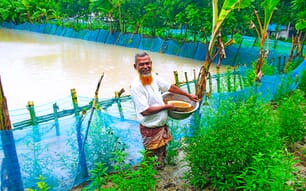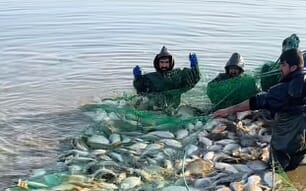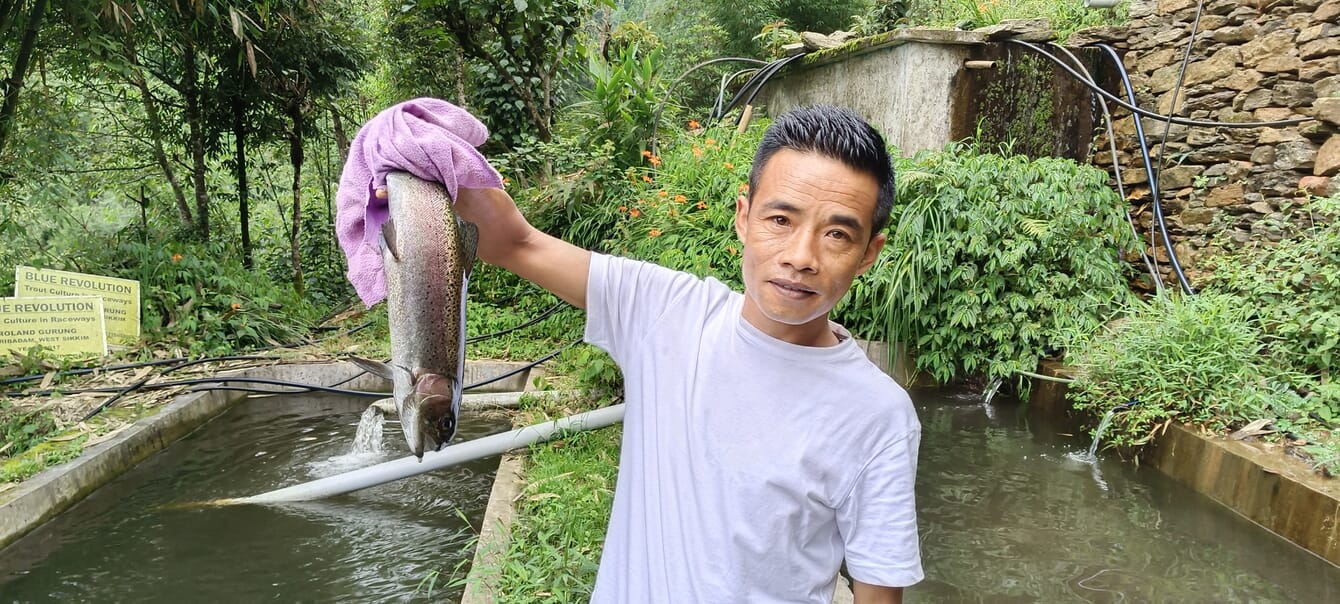
Gurung has eight tanks for cultivating rainbow trout, along with a hatchery holding 3,000 broodstock, and his annual production of fingerlings is around 500,000
What inspired you to embark on a career in aquaculture?
I was a taxi driver in Gangtok city and used to carry tourists to scenic places in Sikkim, as our state is rich in natural beauty.
But the income was barely enough to run the household, as tourism is seasonal work. In 2011, I heard about Blue Revolution, an Indian government scheme that focuses on increasing productivity from aquaculture and fisheries resources.
I thought that it was a good opportunity to earn a decent income and contacted the state fisheries department officials, who told me that my land was suitable for rainbow trout farming because there was a waterfall nearby that would ensure a round-the-clock supply of water.
I was awarded a subsidy of Rs 50,000 ($610) for the construction of the water tank from the state government and had to spend another Rs 30,000 ($365) in its construction from my savings.
The state government also gave me 2,000 fingerlings, 300 kg of aquafeeds and training.
Although I suffered 20 percent mortalities in the first year, due to my lack of experience, it was still a profitable affair and I started selling the fish once they reached 200 grams – which usually takes about 9 months.
The fish fetched Rs 600 ($7) per kg and I earned around Rs 80,000 ($975) in the first year of the business. I realised that it was a profitable affair and ventured full-fledged into fish farming.
I now have eight tanks and cultivate rainbow trout, as we live in a cold climate. I also have a hatchery, holding 3,000 broodstock. My annual production of fingerlings is around 500,000 and my customers include local farmers and even the state department.
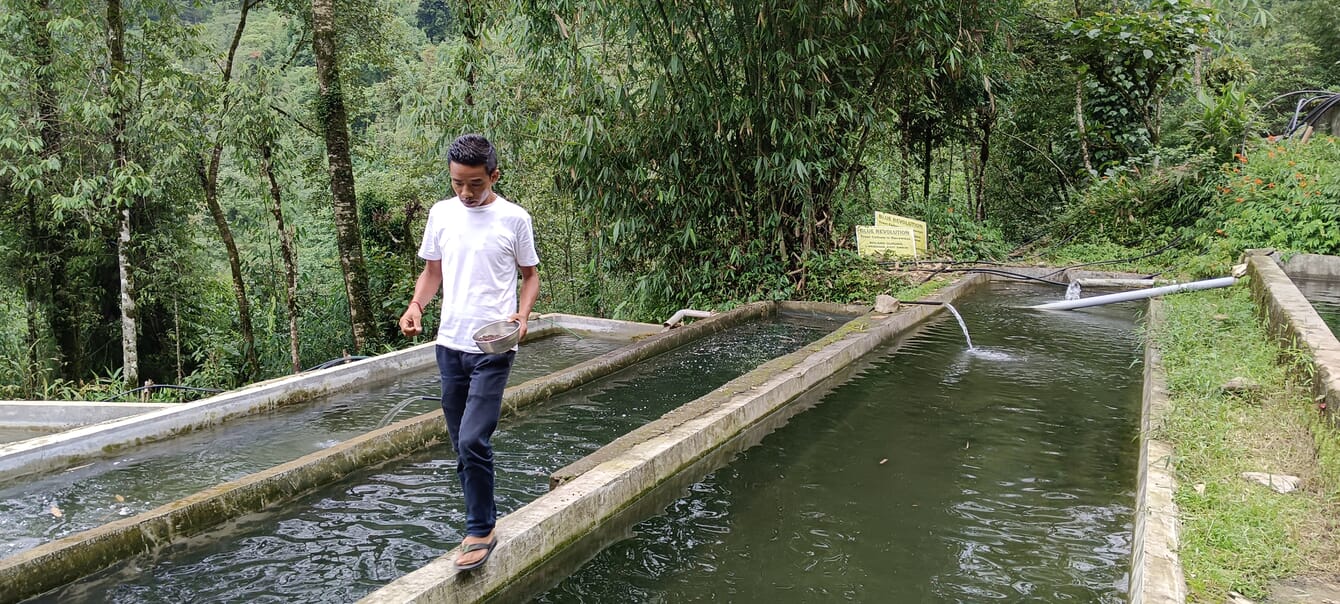
Gurung feeds the fish a formulated feed – that comes from southern India – twice a day and also in the evening
What is your mortality rate and how you tackle the diseases?
The mortality varies from 0 percent to 50 percent per cycle – fungal disease can be an issue here. We buy medicines from the market to control it, but the best remedy is to throw salt in the water.
Describe a typical day at work?
I wake up around 4 am and go straight to the farm to check the fish and the water supply. I also have to check that the water is clean or else there is a risk of mortalities.
I then feed the fish – normally a formulated feed that comes from southern India. The feed is thrown twice a day and also in the evening. The tanks are cleaned two or three times a month to ensure cleanliness.
What’s your biggest worry at work?
The biggest fear is the stoppage in the supply of water, as the entire stock might die in just 30 minutes if the water supply gets interrupted.
Luckily, we have a river close by that ensures a constant supply of water, but a minor interruption can prove to be hazardous for the business.
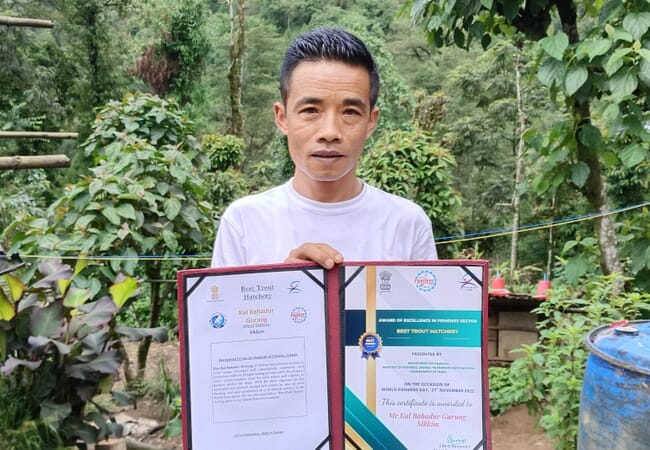
Presented by the state department of fisheries, Gurung was awarded 'best trout hatchery' on World Fisheries Day, 21 November 2022
Have you ever suffered any major loss?
Yes: when the pipes connecting the river to the fish tank were washed away by floods. This cost me Rs 4 lakhs ($4,876) and Rs 9 lakhs ($10,971) in 2016 and 2017 respectively.
Are you selling your fish in other districts of the state?
Yes, I sell fingerlings in the entire state of Sikkim and also send market-sized fish to north Bengal.
Are there any individuals or departments who have particularly helped with your growth?
Yes, I am very thankful to two senior officials of the state fisheries department: Surendra Bhandari, assistant director, and Lobsang Tamang, the joint director of the state fisheries department.
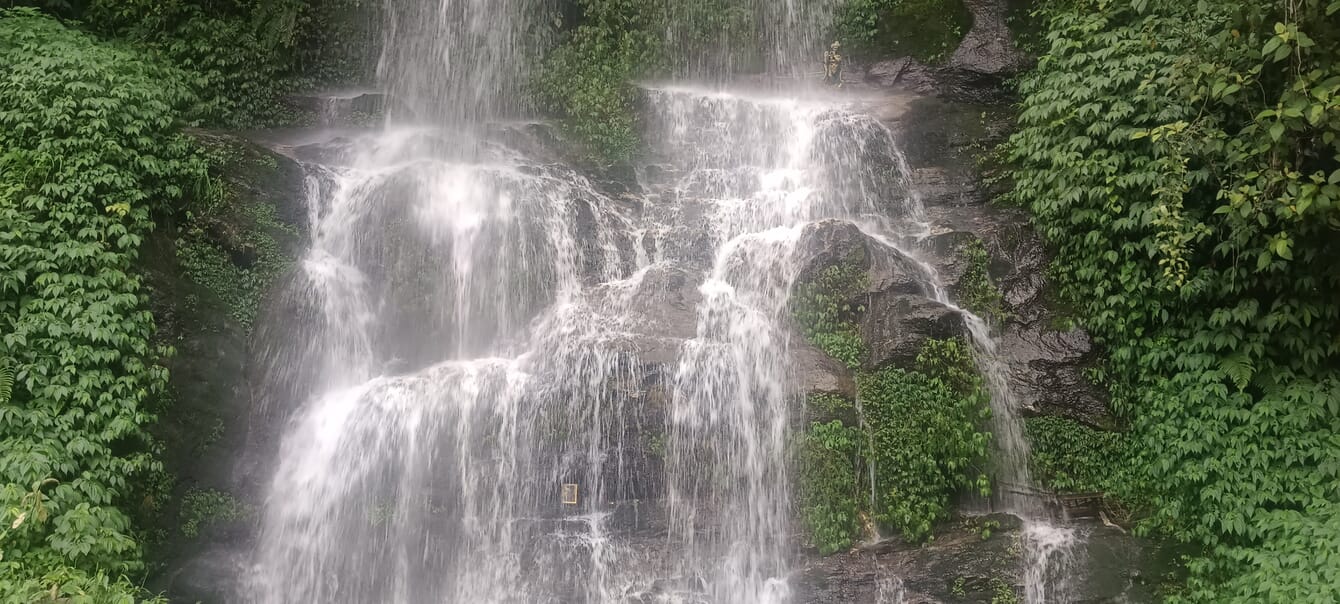
State fisheries department officials told Gurung his land was suitable for rainbow trout farming because there was a waterfall nearby that would ensure a round-the-clock supply of water
What’s the piece of equipment you most require on your farm?
I need a machine that can make feed and also ice making machine, so that we can transport our fish further. The cost of both the machines would be around Rs 6-7 lakhs ($8,529) each, but now I am building my own house.
What’s your ultimate ambition in the aquaculture sector?
My ultimate ambition is to see our state leading in the production of fingerlings, as we have a huge opportunity in rainbow trout farming.
Do you have any advice for budding fish farmers?
I suggest that more youths enter fish farming as it has a huge scope. The young generation run after jobs but the salaries nothing when compared to the profit in the aquaculture sector. I easily earn around Rs 25 lakhs ($30,000) in a year, which hardly any government or private sector job can offer.


